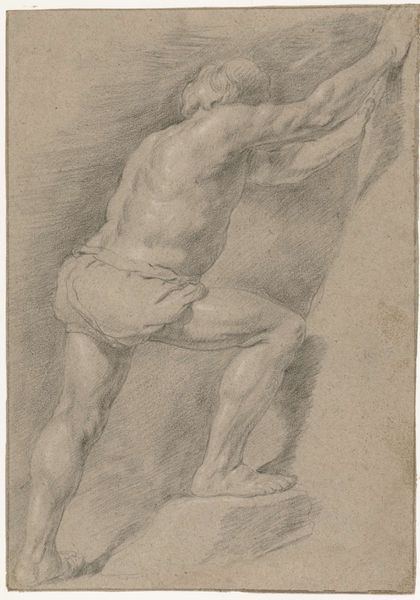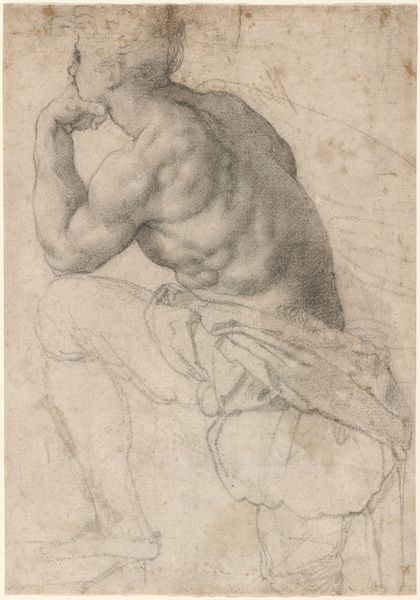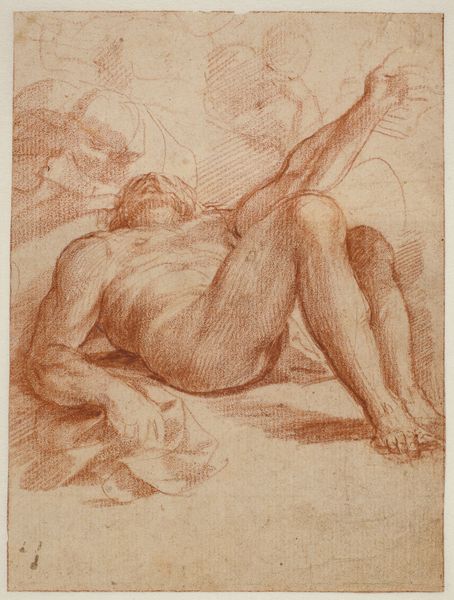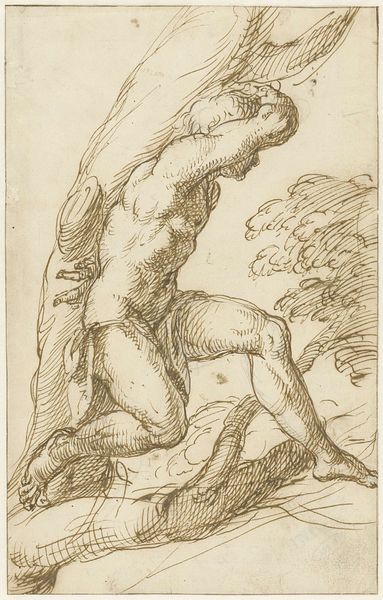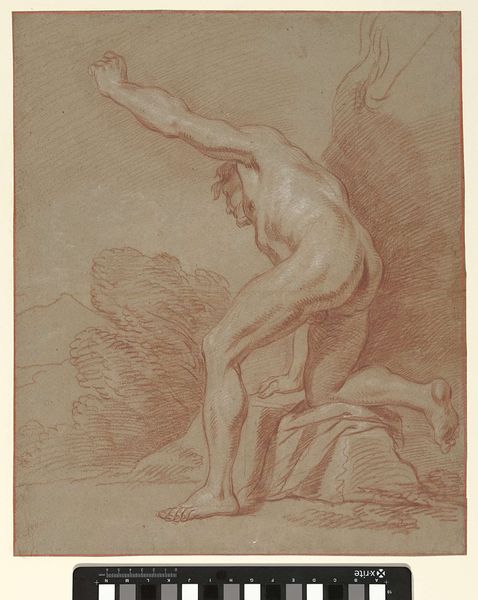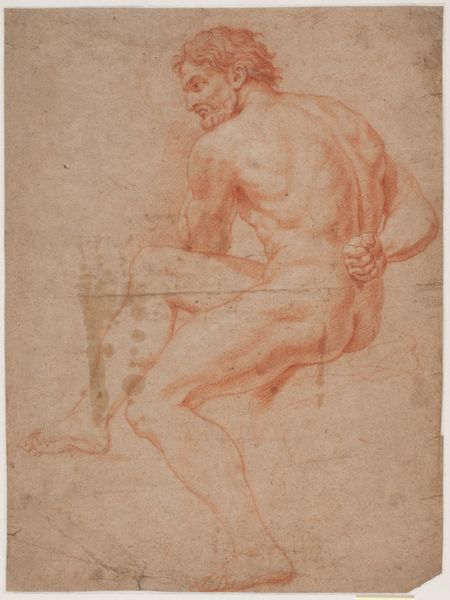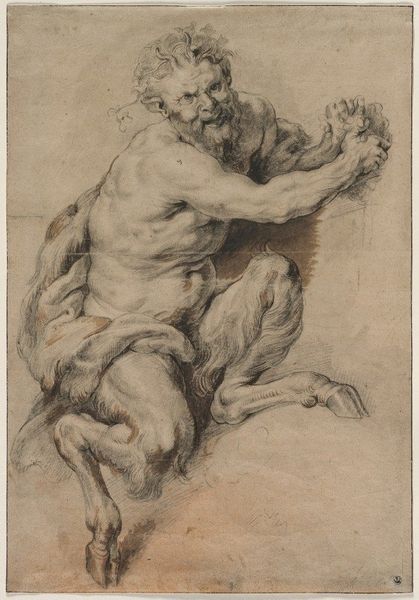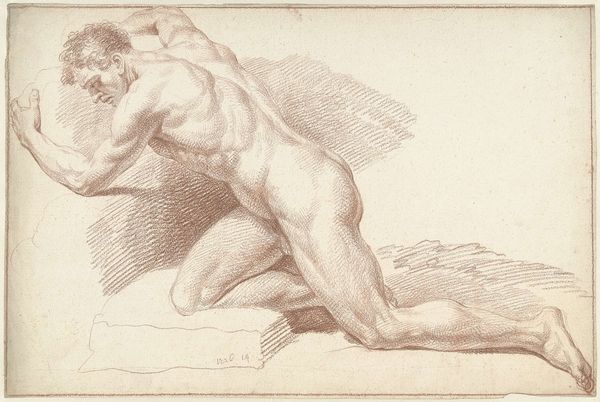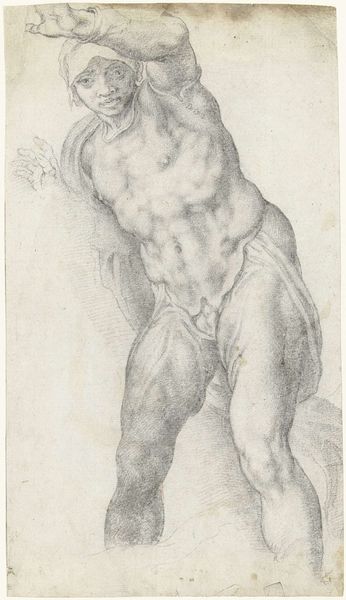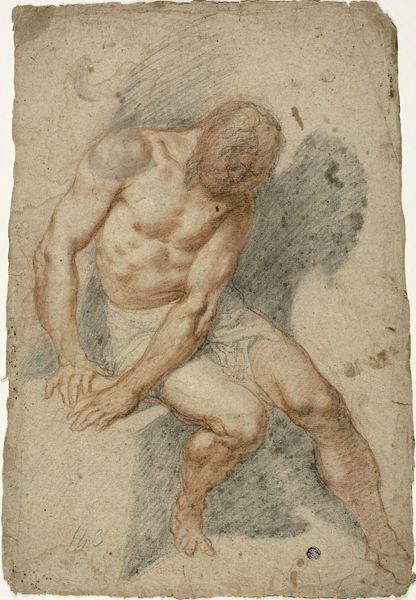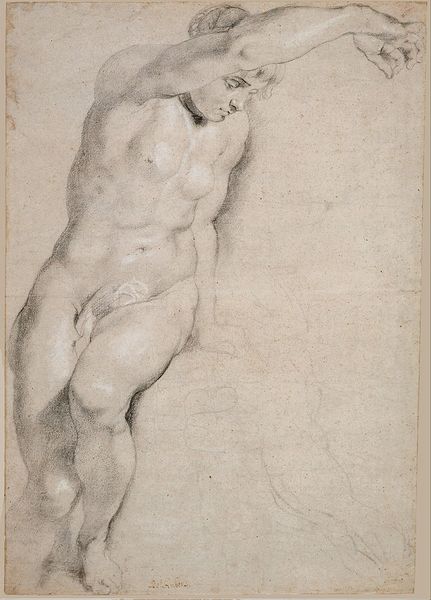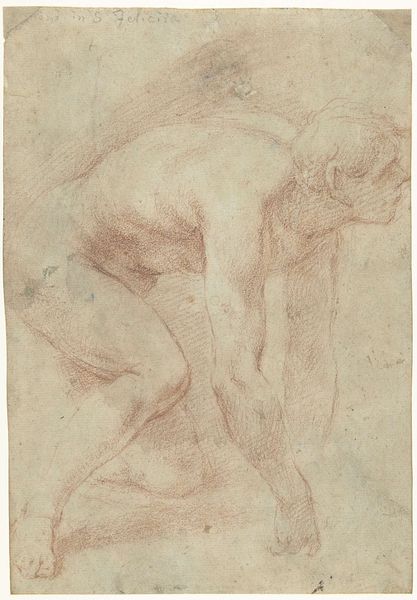
drawing, charcoal
#
portrait
#
drawing
#
baroque
#
charcoal drawing
#
figuration
#
pencil drawing
#
portrait drawing
#
charcoal
#
nude
#
realism
Dimensions: height 506 mm, width 376 mm
Copyright: Rijks Museum: Open Domain
Curator: This drawing, “Zittend mannelijk naakt,” or “Seated Male Nude,” is attributed to Theodoor van der Schuer, and dates roughly between 1638 and 1707. It is rendered in charcoal, a powerful medium to capture the subtleties of the figure. What’s your first impression? Editor: There's a somber, almost melancholic mood radiating from this drawing. The way the figure's head is bowed, combined with the dense strokes of charcoal, it evokes a sense of quiet contemplation and perhaps, resignation. It recalls the imagery of the “melancholic” artistic temperament from Renaissance thought, or even, Adam expelled from Paradise, exiled from an original innocent state. Curator: It's interesting you bring that up, because when examining figuration, and more particularly nude figuration throughout art history, the intent often leans toward idealization and control, a male-centric gaze in positioning of power dynamics. Here though, what's key to note is how van der Schuer might subvert this by presenting the male figure in a posture that suggests vulnerability and introspection. What are your thoughts? Editor: The posture is crucial. The slouched shoulders and the relaxed hands, there is a subversion of the traditional hero figure of Baroque paintings. Consider too the drawing's red chalk. Its warm hues create flesh tones, connecting this ideal figure to raw emotion. You see this raw quality throughout the Baroque; it’s more natural, less perfect than prior visual regimes. It allows us to project pathos onto him. I wonder if Van der Schuer meant to evoke such vulnerability? Curator: Absolutely. And considering that Van der Schuer's context involves a burgeoning awareness and shift toward individual emotion, you can observe within "Seated Male Nude," that these visual choices weren't merely artistic quirks; instead they serve as commentary and provide social insights into both gender constructs as well as emotional sensitivity, particularly as expressed via masculinity during the time. Editor: So the drooping posture symbolizes perhaps, not only weariness, but a move away from classical notions of heroism. He is not idealized but tangible, weighed down, but very human. It reminds us of the enduring power of images to reflect, but also reshape, our understanding of humanity and our cultural ideals, which can carry weight over time. Curator: It demonstrates the potential of art, and the visual representation of a man during that time to express societal shifts and underscore evolving gender expectations. It serves to demonstrate how cultural understandings during that period become nuanced, shifting perceptions on beauty, on identity, on power and the ever-changing construction of these ideologies throughout our social evolution. Editor: Exactly, that convergence of the universal, raw humanity with historical specifics – makes viewing this drawing such an affecting experience. It highlights the intersection between emotion, meaning, and representation in visual form.
Comments
No comments
Be the first to comment and join the conversation on the ultimate creative platform.
